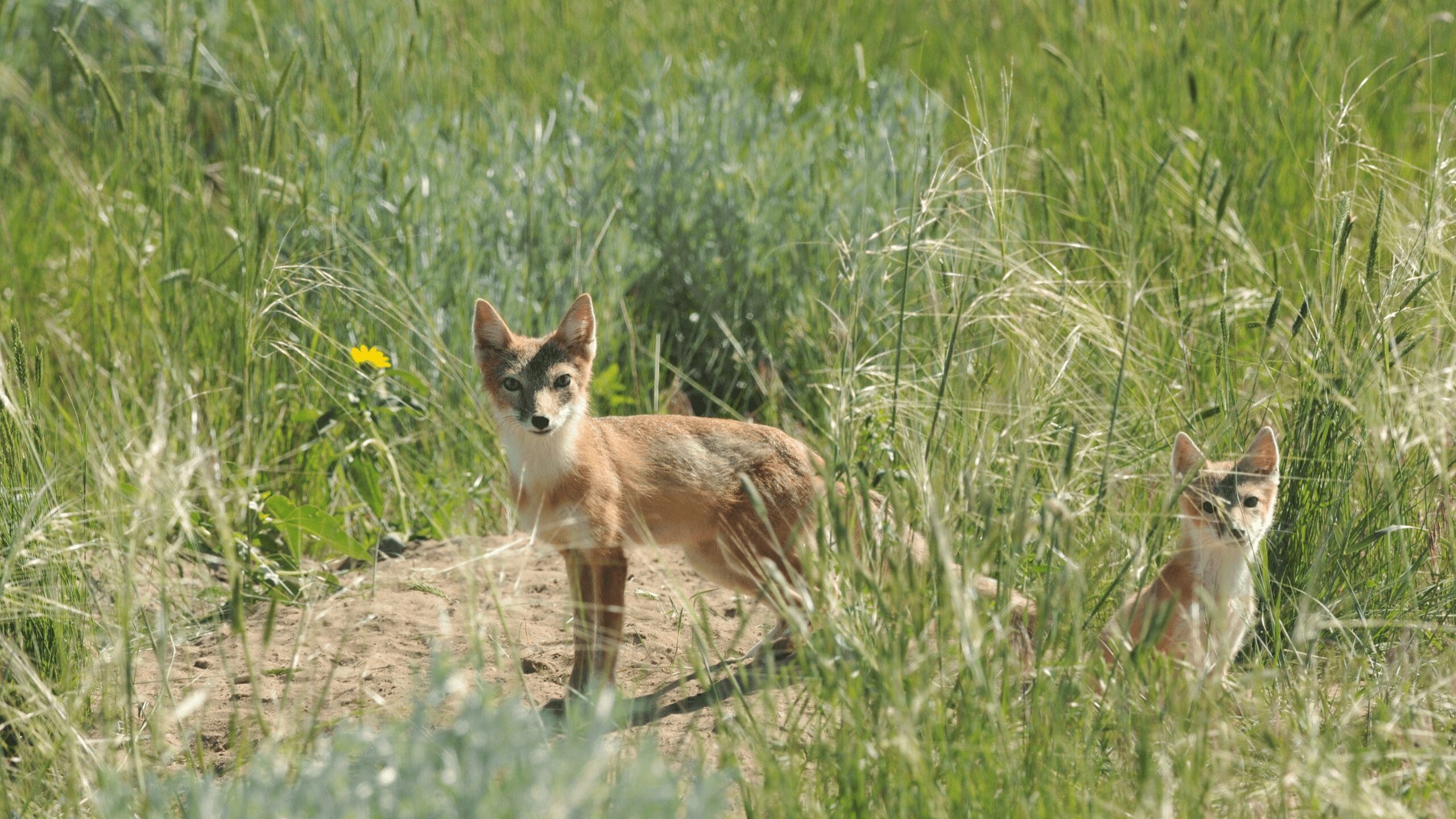Posted: April 30, 2023
Our Wildlife of the Week – 2023 Week 18…
Meet the “Swift Fox”!
(Vulpes velox)
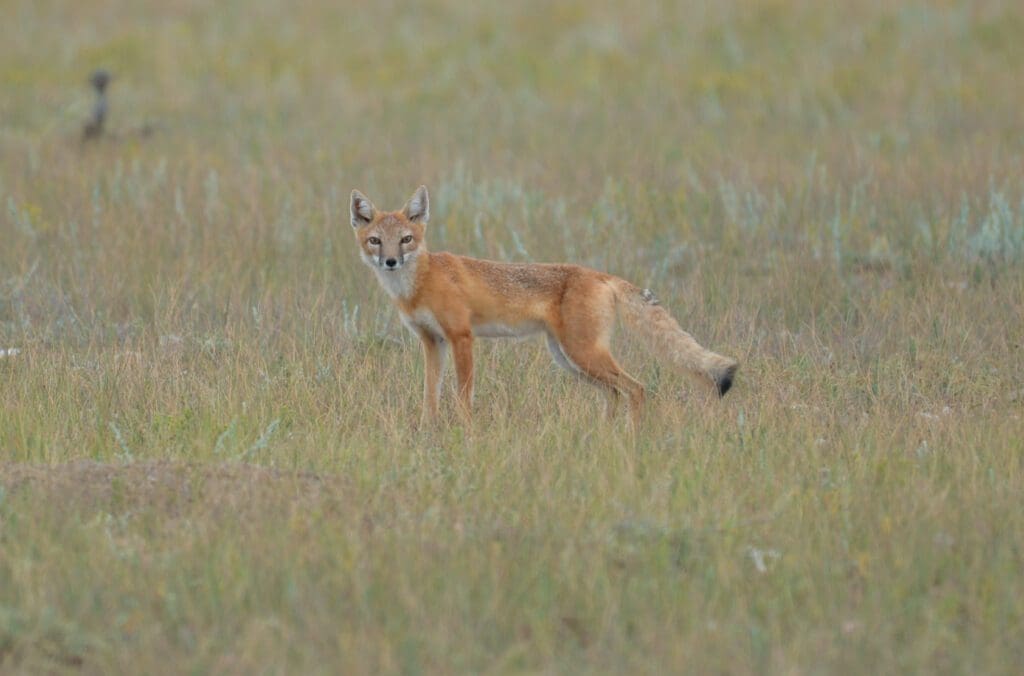
Table of Contents
Swift Fox Physical Description
The Swift Fox is the smallest of the wild dogs in North America. Adults weigh between 4 to 7 lbs (2 to 3 kilograms) and are approximately 12 in (30 cm) tall and 31 in (80 cm) long. They are about the size of a domestic cat. Males and females look similar except that males are slightly larger.1
The fur of the Swift Fox is light grey with orange-tan coloring on the sides and legs. The throat, chest, underside and inside of the ears are creamy white. The tail is bushy and marked with black at the tip. There are also black patches on either side of the snout.1
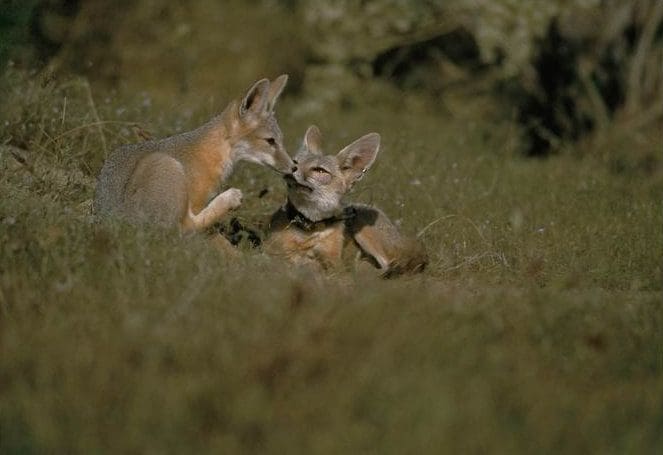
Swift Foxes sometimes pair for life, but may not necessarily mate with the same partner each year. Swift Foxes have only one litter annually, with a litter size ranging anywhere from 2 to 6. Pups are born in the underground den and typically remain there for about one month. After birth, the eyes and ears of the pups remain closed for 10 to 15 days, thus leaving them dependent on the mother for food and protection. Pups are weaned when 6 to 7 weeks old but usually remain with the mother and father until the fall.1
SPONSORED ADVERTISEMENT
Swift Fox In Action
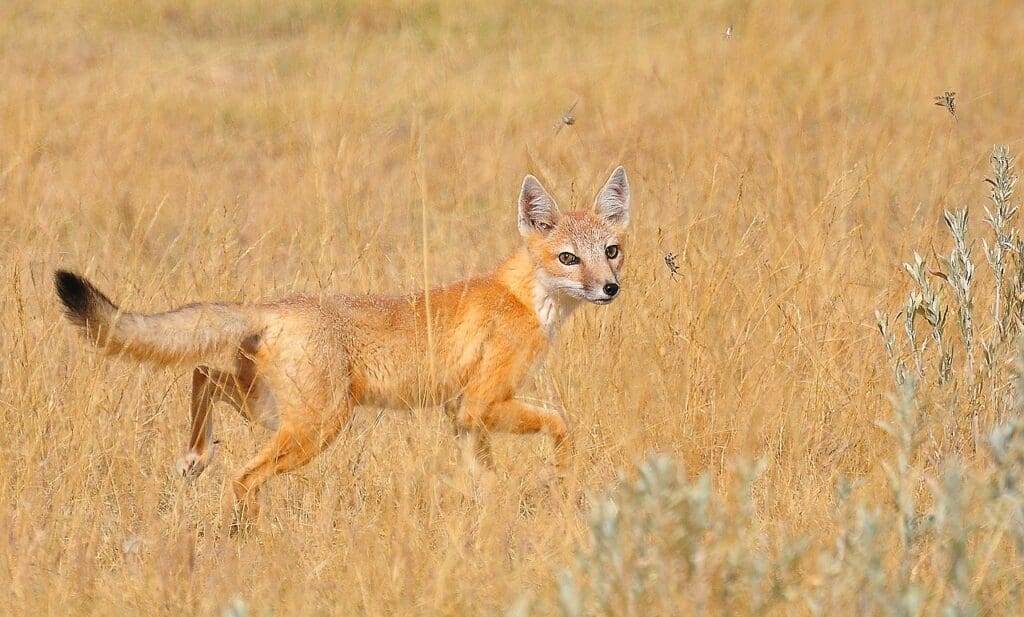
The Swift Fox is indeed rather swift, reaching speeds of over 31 mph (50 kmh). Their speed helps them catch food and avoid predators. Swift Foxes also avoid predators by seeking shelter in burrows. Their dens are burrows underground, usually 2-4 meters in length with 4 entrances.1
The Swift Fox is mainly a nocturnal species. Daytime activities are confined to dens and vary seasonally. In winter, foxes may sun bathe during the warm midday period, while in summer they only spend early evenings and nighttime above ground.1
SPONSORED ADVERTISEMENT
Where to Spot Swift Foxes
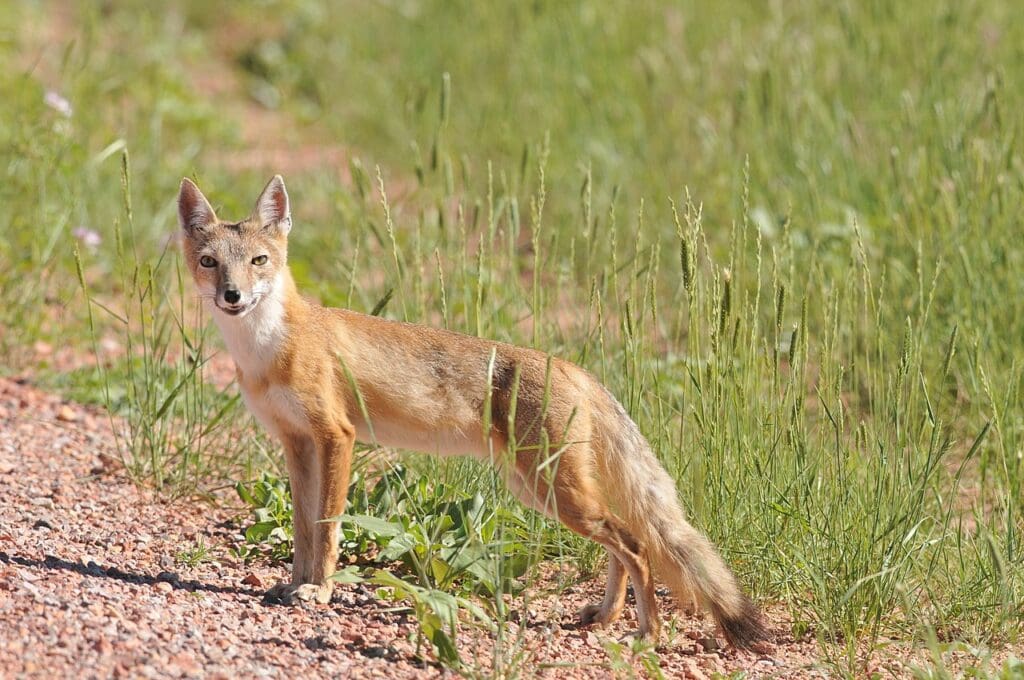
Swift Foxes live primarily in shortgrass prairies and deserts. They often form their dens in sandy soils on open prairies, along fences or in plowed fields. At present, there are a few scattered populations of Swift Foxes in the Great Plains of the U.S. and in western Canada. The largest population is in Colorado, Kansas, New Mexico, and Wyoming, where the species is stable.1
The Swift Fox can be found in over 6 National Parks and other National Park Service sites.2 Including:
- Badlands National Park
- Big Bend National Park
- Death Valley National Park
- Great Basin National Park
- Theodore Roosevelt National Park
- White Sands National Park
SPONSORED ADVERTISEMENT
Swift Fox Conservation Status
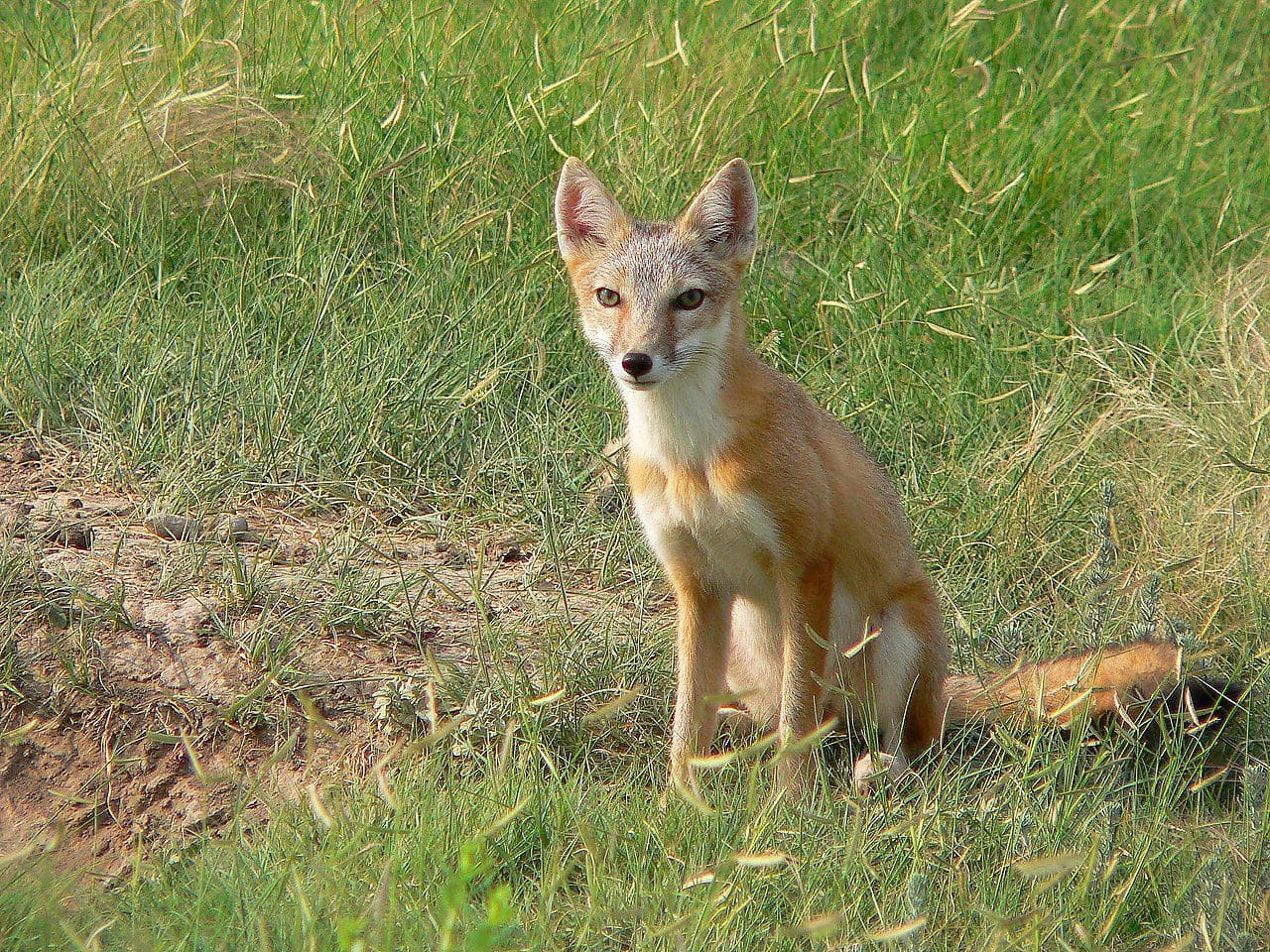
The Swift Fox is a severely endangered species and is listed as an Endangered Species in the United States. It has faced habitat losses due to agricultural, industrial and urban development. Hundreds of Swift Foxes were killed accidentally during the early 1930s from predator control programs aimed at removing wolves, coyotes, and ground squirrels from prairies. In 1978, the species was declared extirpated in Canada. There are currently populations of Swift Foxes in the U.S. ranging from South Dakota to Texas. However, the population is stable only in the central part of the range.1
Several things can be done to try to prevent further loss of and to encourage repopulation of Swift Foxes. Preserving the habitats of the foxes is crucial. Also, captive breeding could help increase the number of Swift Foxes. Reintroduction programs, like the ones in western Canada, may also be successful in restoring the Swift Fox to its natural habitat. However, a large number of reintroduced individuals do not survive their first year in the wild for one reason or another. Therefore, populations must be monitored and protected from human harm. Even though it is illegal to kill Swift Foxes, they are sometimes mistaken as coyotes and killed.1
Swift Foxes and You
Have you seen a Swift Fox in it’s natural environment? Tell us about it in the comments below!
Do you have a picture of these amazing creatures? Share it on social media with us and tag us in your post.
Use the hashtag:
#WildlifeOfTheWeek.
Interested in Wildlife Photography???
Check out this amazing beginners guide from National Geographic:
National Geographic Photo Basics The Ultimate Beginner’s Guide to Great Photography
The above links are provided in this article as affiliate links. Meaning, at no additional cost to you, we’ll earn a commission if you click one and make a purchase. An easy way to help support us if you’re going to buy anyway!
Learn more about all the amazing wildlife in our National Parks and how to safely “Watch Wildlife” on this amazing page with lots of resources from the National Park Service!
Want tips for photographing wildlife? Check out this great article for tips from the National Park Service.
Help support Discover Our Parks by becoming a Patron for as little as $1 a month! Your support will help us continue to provide articles like this and add even more information about our parks to this site.
If you want to make a one-time donation, buy us a coffee!
‘We got some of the above information from the following:
1: Animal Diversity Web – Vulpes velox – Swift Fox
2: NPSpecies – Find Parks Where a Species is Found
Check out these recent posts from Discover Our Parks:
- The Isolated Black-bellied Salamander: Wildlife of the Week – 2023 Week 22

- The Splendid Sandhill Crane: Wildlife of the Week – 2023 Week 21

- The Promising Peregrine Falcon: Wildlife of the Week – 2023 Week 20
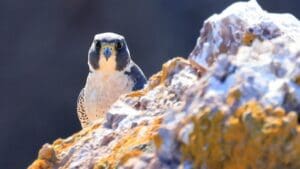
- The Intimidating Killer Whale: Wildlife of the Week – 2023 Week 19

- The Swift Fox: Wildlife of the Week – 2023 Week 18
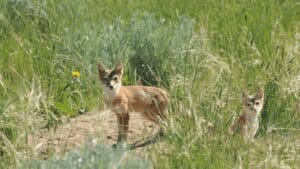
SPONSORED ADVERTISEMENT

